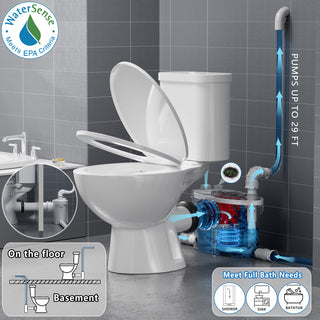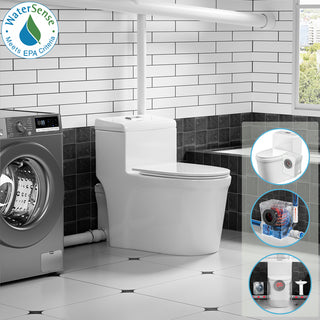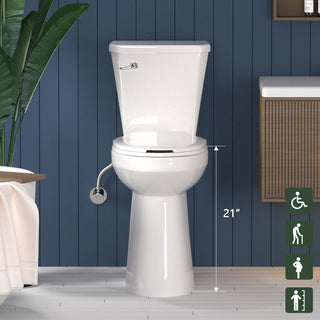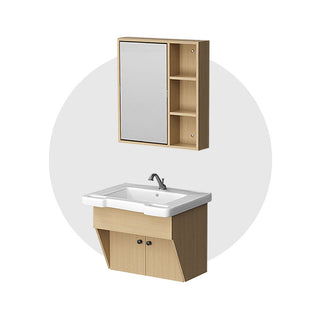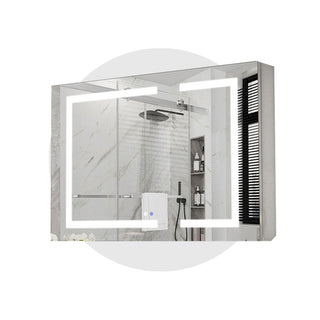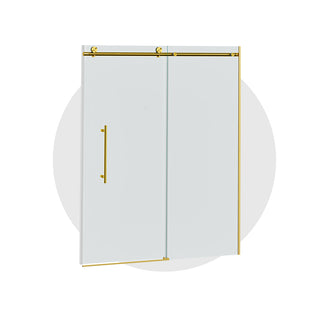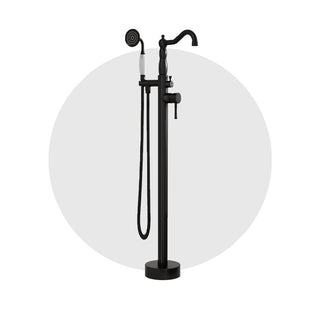S-trap and P-trap toilets are the two most common types of drainage configurations. They differ in design, installation requirements, and user experience. To help you decide which option better suits your home, this article presents a clear side-by-side comparison of their key differences, pros, and cons.
📌 Want to understand how each trap works in detail? Check out our in-depth guide: S-Trap vs P-Trap Toilet Bowl Explained
S-Trap vs P-Trap Toilets at a Glance

S-Trap Toilets: Key Advantages & Drawbacks

✅ Top 5 Advantages
-
Widely Compatible with Floor Drains
Most use standard 12" rough-in, ideal for homes with existing floor drainage. -
Flexible Installation for Retrofits
Easily replaces older S-trap toilets without moving rough-in positions. -
Adjustable Water Seal Height
Water seal automatically replenishes after flushing, meeting plumbing standards. Overflow tube design allows adjustment based on venting and odor control needs. -
Powerful Siphon Flush
Utilizes siphon action to create a strong flushing force, effectively clearing waste and minimizing clogs. -
Broad Product Availability
Commonly found in many markets worldwide, especially in retrofit projects, with a wide range of models and replacement parts available.
⚠️ Mild Drawbacks
-
Limited Availability for Non-Standard Rough-Ins
Older homes often have 10" or 14" rough-in sizes, which are becoming increasingly rare in the market. Especially for users seeking tall or extra-tall toilets, options for these classic rough-in dimensions are limited and gradually being phased out. -
Vent Dependency
Poor venting can lead to siphon-induced water seal loss or gurgling sounds. -
Slightly Louder Flushing Noise
The siphon flush may produce more sound, though not typically disruptive.
P-Trap Toilets: Key Advantages & Drawbacks
✅ Top 5 Advantages
-
Superior Backflow Prevention
The P-trap shape creates a reliable water seal that naturally blocks sewer gas and prevents backflow. -
Wide Range of Models Available
Standard rear outlet toilets can connect to existing wall drain pipes or be paired with macerating pumps in basements or locations where major plumbing changes are undesirable. Wall-hung toilets are also widely available, featuring concealed tanks that save space. -
Cleaner, Quieter Flush
Generally operates with less noise compared to siphon-based systems, providing a more pleasant user experience. -
Water Efficiency
Most models comply with or exceed EPA WaterSense standards for low-flow toilets, helping reduce water consumption. -
Fully Code-Compliant in Modern Builds
Meets current plumbing codes in most residential and commercial applications.
⚠️ Mild Drawbacks
-
Requires Precise Wall Outlet Alignment
Installation demands accurate rough-in measurements, especially during retrofits, to ensure proper fit and function. -
Higher Retrofit and Maintenance Costs
Users opting for wall-hung or macerating pump systems may face additional maintenance needs and expenses beyond the toilet itself. -
Non-Adjustable Water Seal
The water level in the trap is fixed by design and cannot be adjusted.
Conclusion
Both S-trap and P-trap toilets come with distinct advantages and limitations. If you want to minimize renovation costs and complexity, it’s generally best to choose the trap type that aligns with your existing plumbing system. This approach ensures a smoother installation with fewer surprises.
However, if you are building new or open to extensive remodeling, you have the opportunity to carefully consider your specific needs—such as space constraints, flushing performance, noise preferences, and water efficiency—and select the toilet trap type that truly fits your lifestyle and home design.
Ultimately, understanding these differences empowers you to make a confident, informed decision that balances functionality, comfort, and budget.
🔎 Explore More
Still unsure? These articles may help:


